The Problem
In my initial attempt to install ClearLinux version 28020 on bare metal I encountered two complications:
-
All partitions selected as targets for the installation must be on the same disk.
-
The entire disk must be made available to Clear Linux because it will delete all existing partitions and create/re-create the partitions assigned to it.
This is not necessary in other distributions whether they have a GUI installer or not, and will simply format the partitions -- if specified -- and assign them to a specified mount point, while other existing partitions on the system not not selected as the targets for installation are left untouched. This limitation may be because of Clear Linux's evolution from a its roots as a specialized platform where only a single filesystem is necessary, such as for containerized applications.
The Clear Linux documentation does state that the Clear Linux must be the first OS installed on a computer, without detailing the nature of the requirement -- not mentioning the limitations mentioned above. When I browsed the documentation, I assumed that it was simply because the CLear Linux installation would only overwrite the EFI System Partition, not the entire disk.
My initial desire, before I discoverd these limitations in the installer, was to replace an existing Linux root filesystem partition on the primary SSD of the Acer V15 Nitro Black Edition VN7-592G-70EN with the Clear Linux root filesystem, replace an existing Linux home filesystem partition on the secondary HD, use an existing swap partition on the secondary HD, and use the existing EFI System Partition on the primary SSD -- easily achievable on most distributions. Not so on Clear Linux.
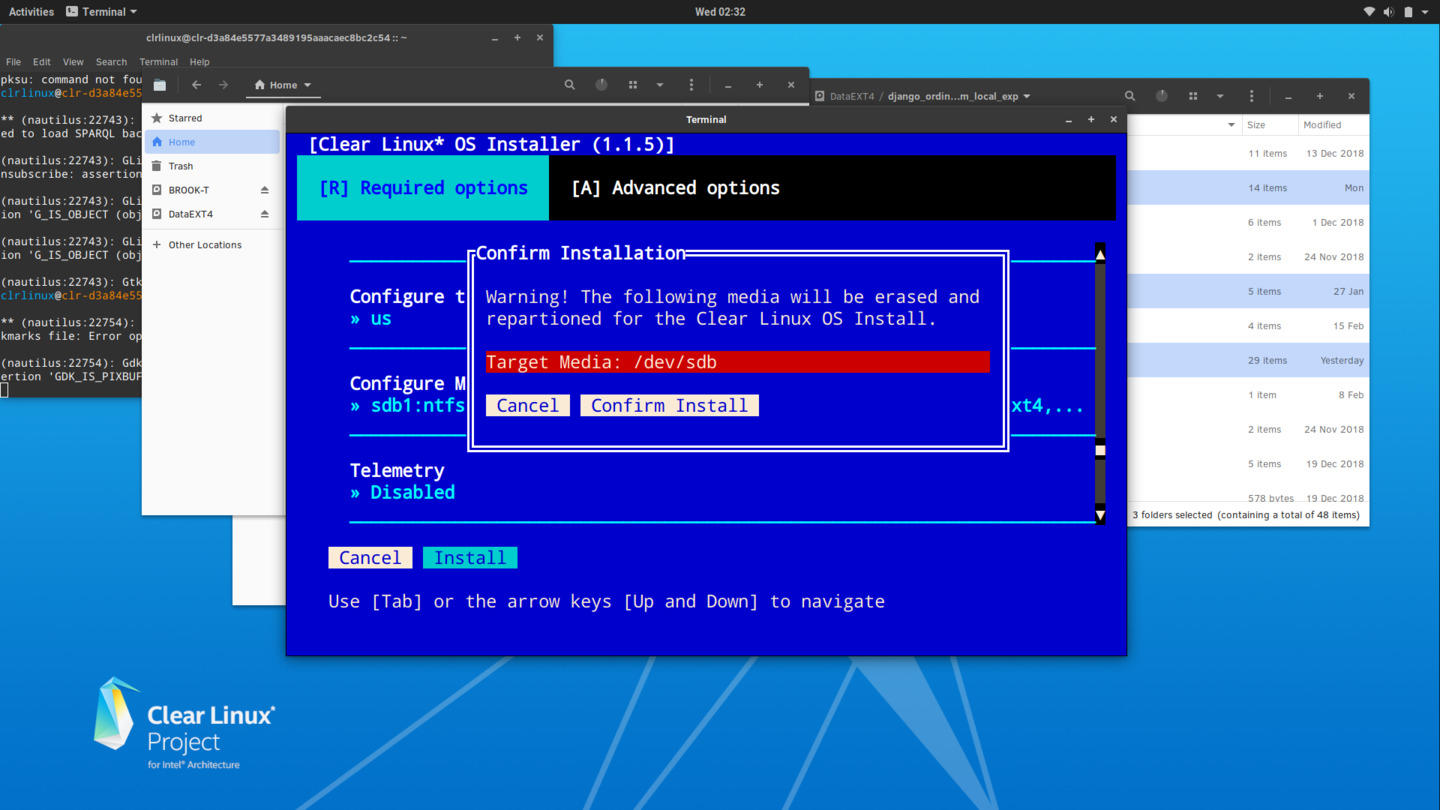
Clear Linux Will Erase the Entire Disk.
Clear Linux will delete the entire disk before creating its partitions, even when assigning existing partitions.
After numerous attempts to assign partitions from the two disks, in the
Installer and the
Live Desktop images, I decided to only select existing partitions from the second disk, including a small partition properly formatted and configured for use as an EFI System Partition on the second disk that I use as a backup of the one on the primary disk. This time the selections were accepted, but I was presented with the screen displayed in the previous screenshot, warning me that proceeding will delete the entire disk!
The Solution
As I really wanted to try Clear Linux on bare metal as opposed to on a virtual machine, and the only computer available to me besides the Acer V15 Nitro was an old Toshiba with a first generation Core-i3, I decided to reconfigure the partitions on the Acer by relocating the OEM Windows installation and its recovery partition to the secondary drive and installing Clear Linux on the primary SSD, allocating 35 GB of the available 128GB -- 118 GB after formatting -- to a Clear Linux root partition and a Clear Linux home partition, with a plan to relocate this home partition to the secondary partition after installation. The remaining space on the SSD would be available to two other root partitions of whatever distributions I would install after Clear Linux and a the new EFI partition. Ordinarily I would have placed the home partition on the secondary drive, but again Clear Linux requires all partitions selected for installation to be on the same disk.
-
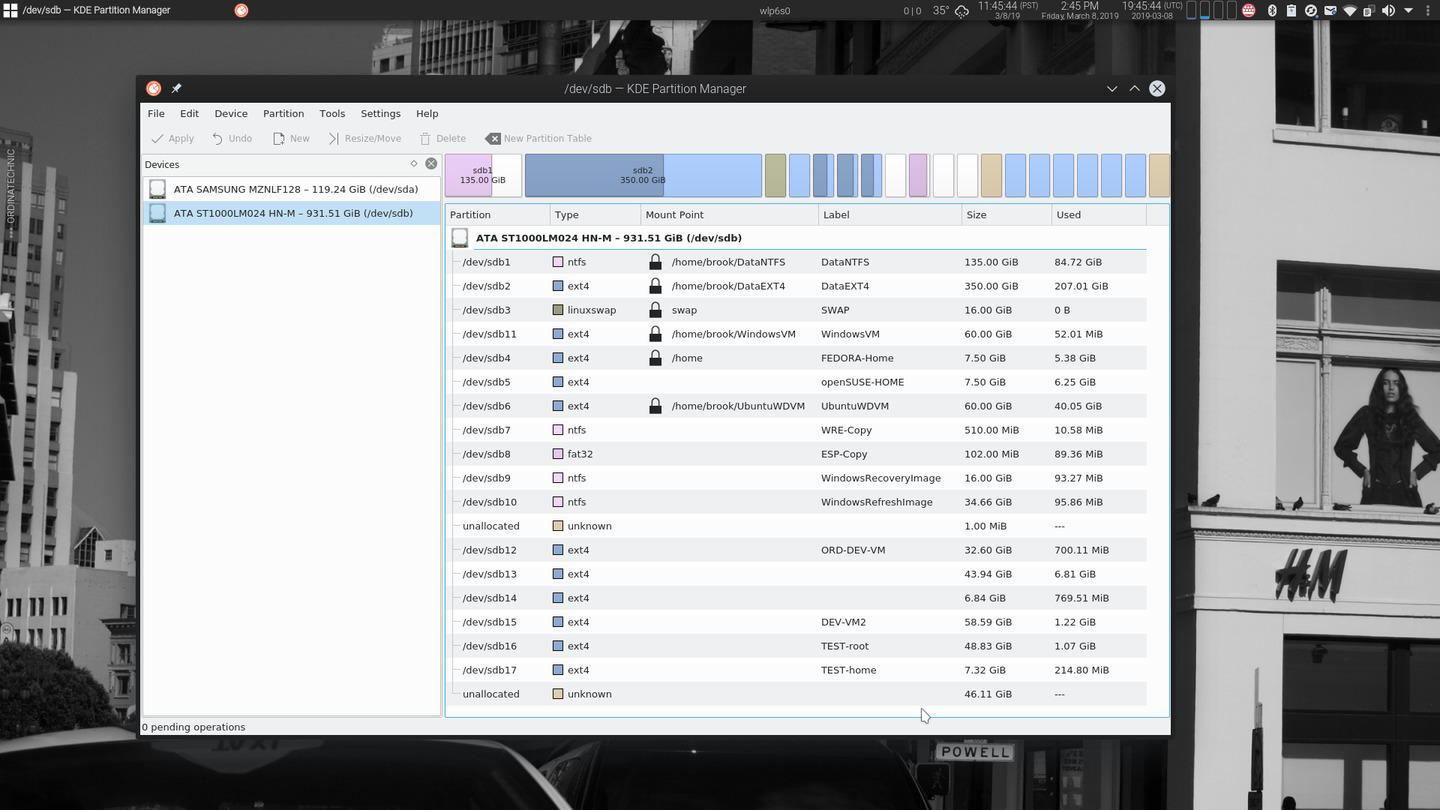
KDE Partition Manager Showing Partitions on the Second HD Before Changes
The unallocated space at the end of the disk will be used for the relocated Windows installation along with its recovery partition and the Microsoft Reserved Partition.
-
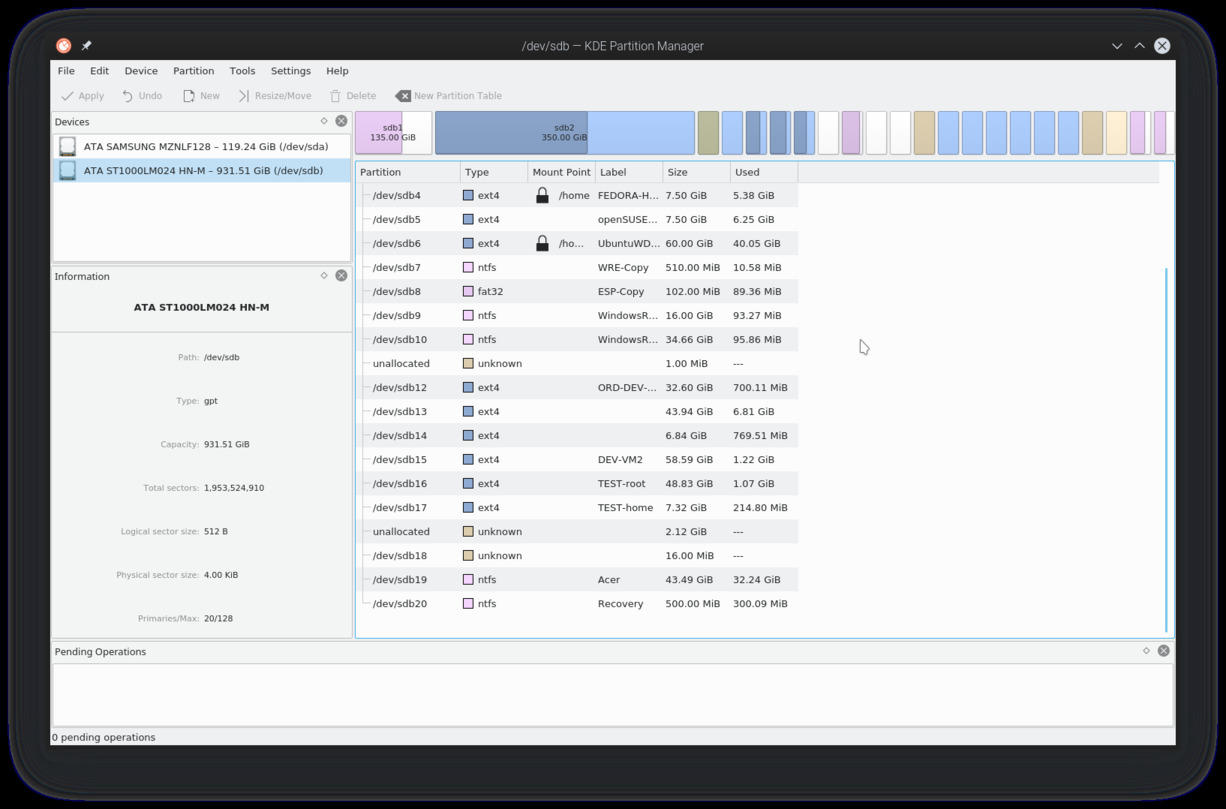
KDE Partition Manager Showing Partitions on the Second HD After Changes
The Windows partition, its recovery partition, and the Microsoft Reserved Partition after relocation to the secondary disk.
The First Part of the Changes I Made to My Acer In Order to Install Clear Linux
I relocated the Windows partitions from the primary SSD to the secondary HD in order to accomodate the Clear Linux (version 28210) installer's limitations.
After this relocation, I was able to select the primary SSD for installing Clear Linux specifying appropriately sized partitions for an EFI System Partition, a root filesystem, a home filesystem, and swap space. The instller did not touch the secondary drive where my data lives.
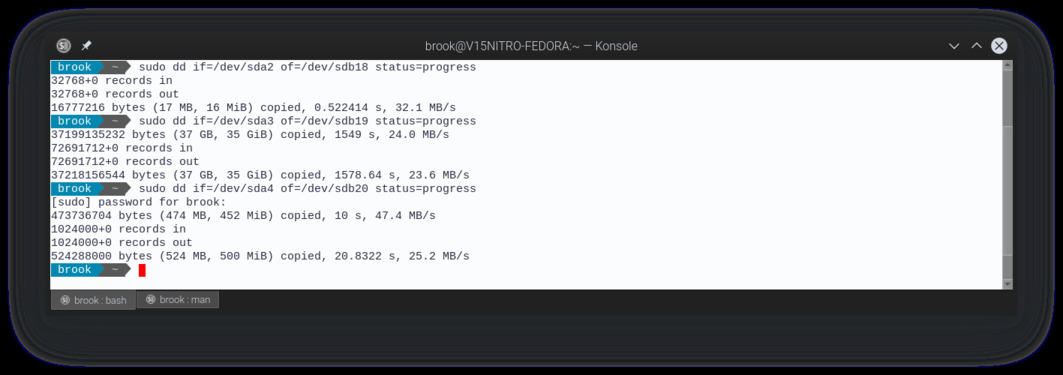
Copying the Windows Installation Along with the Recovery Partition and the Microsoft Reserved Partition
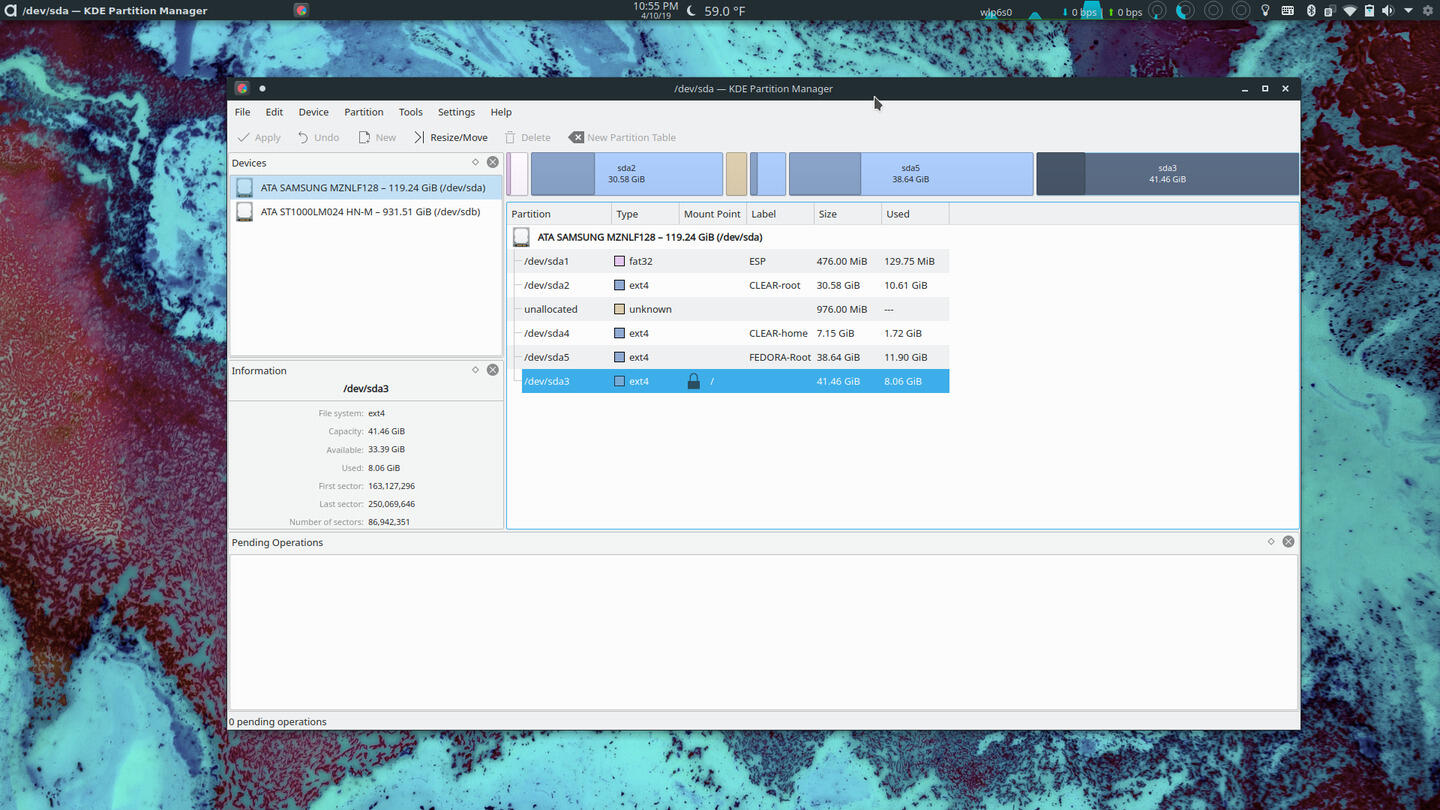
KDE Partition Manager Showing Partitions on the Primary SSD After Changes
The unlabled partiton is a new Solus installation which I compare to Clear Linux in the review of Clear Linux.
Final Thoughts
As many seasond Linux users know, this kind of limitation doesn't exist in many modern GNU/Linux distributions. Clear Linux may be at this time have these requirements because it may have evolved from a distribution for containerized applications or some similar specialized use.
Thanks to these hoops I went through, I now have reclaimed the space that was wasted on Windows (I never booted into it), and now can have three Linux installations -- root partitons only, with home partitions on the secondary HD -- instead of two, but at some point I'll need to update the Windows Boot Manager configuration to point to the new ,location, if I want to boot into this relocated Windows installation
Look for the review of Clear Linux and review supplements with installation screenshots and other aspects of Clear Linux.